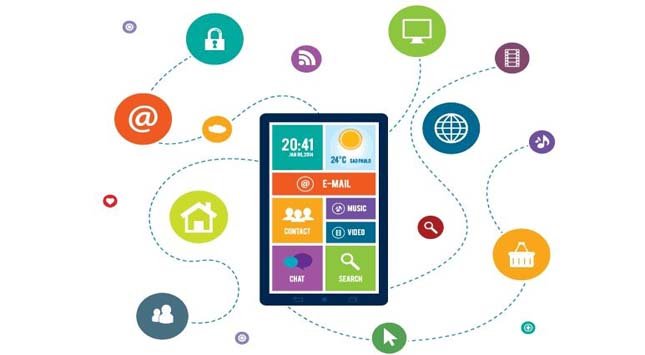The growing use of mobile applications helps enterprises improve customer service and increase product sales and business visibility.
Mobile apps can significantly contribute to increasing your brand presence among your targeted customers. There are manifold mobile app development benefits for businesses, mainly acquisition, engagement, and conversion.
It is an innovative method to reduce costs, increase productivity, and boost sales. Mobile app development also enables companies to generate high ROI and improve conversion rates.
It is estimated that the total number of people using phones globally is 4.8 billion, which means that nearly 73 percent of them are smartphone users. To increase their presence on mobile platforms, companies can invest in developing mobile apps.
The trends reveal that 80-90% of mobile applications launched in the app stores are abandoned just after a single use. It is essential to develop the right strategy and plan the app development thoroughly.
The app needs to be tested thoroughly to identify and optimize the features and align it for various user segments, while the app is in production.
Mobile app testing consists of different testing methodologies like performance testing, GUI testing, and end-to-end testing to ensure that the final feature launch is successful.
You can perform mobile device anywhere automation testing to check the performance, security, and compliance of applications with minimal human intervention. It is essential to outsource the right testing services to generate functional test scripts that will ensure that the app’s functionality and usability meet the requirements before launch.
You need to ensure that your test coverage is sufficient. Mobile app testing offers various advantages. Here are three reasons why you should perform mobile app testing.
Better UI/UX
UI testing helps to validate if the visual meets the expected performance and functionality and is free from effects. It involves testing all visual indicators and graphical icons, including menus, radio buttons, text boxes, checkboxes, toolbars, colors, fonts, and more. UI/UX testing’s main aspects are visual design, functionality, usability, performance, and compliance.
Mobile app testing enables testers and QA engineers to improve the UI/UX design. The testers put themselves in the users’ shoes to familiarize themselves with what the target audience wants and expects. If your app has better UI/UX, you will experience better traffic, increase your customer retention capacity, and even acquire new ones.
As there is fierce competition in the market, it is essential to develop an app that has an attractive design. Improving the UI/UX of your app with comprehensive app testing will enable you to deliver a better user experience to maintain consistency. This will reflect in terms of better ROI for your business.
Excellent UX design involves a lot of learning and experimentation. Testers need to explore the logic behind the application and double-check if the interface is intuitive and convenient to follow.
The testers need to run continuous UI and UX tests through the entire development life cycle to get the desired results. UI testing is performed manually or automation tool to ensure that all UI elements meet the requested specifications.
Proper Functioning
Performance testing helps to evaluate an application’s speed, responsiveness, and stability under a particular workload. It enables the tester to identify performance-related bottlenecks and ensure that the app functions without a glitch.
QA team needs to identify the key scenarios and data points for conducting tests as close to natural conditions as possible. It helps to verify the compatibility of your application to work across various platforms.
The QA team should decide if they will use real devices for testing or emulators. Accurate device testing enables you to run your app and check its functionality. Real device testing assures you that the app will deliver a smooth performance in customer handsets.
For testing mobile apps, an emulator mimics the hardware and OS of apps that should be tested. The testers need to weigh these two options carefully. Simulators do not mimic the hardware/OS, but it mimics the basic behavior of a device. Simulators are pretty handy in the initial stages of app development. However, you need to perform actual device app testing to test comprehensively.
Loyal Users
Mobile app testing helps you to build an app that will keep your end-users happy. Building a high-quality app will increase its receptivity in the marketplace.
You can improve customer service, increase customer engagement, and make a strong reputation with your app. However, the app should be tested thoroughly, and you need to re-run the test scripts to ensure that the app delivers a smooth performance.
To Conclude:
Mobile application testing refers to testing an app using scripts, tools, or any test automation frameworks to identify errors and functional glitches. It helps you to improve the scope of your app among your target audience.






